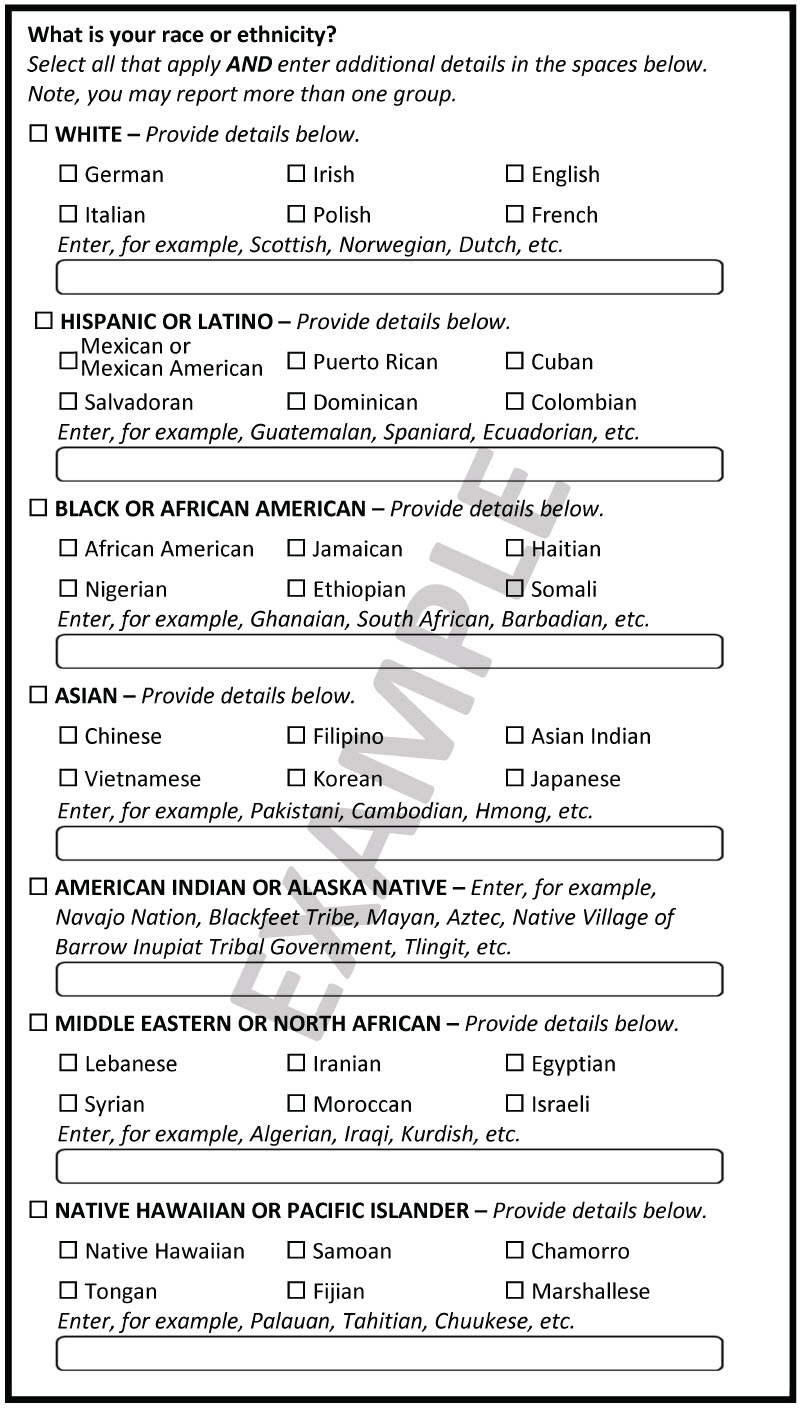Collecting Detailed Race and Ethnicity Data
Initial Proposal 3: Require the collection of detailed race and ethnicity categories by default.
The Working Group proposes that SPD 15 require data collection on race and ethnicity at the detailed category levels, as specified by the example in Figure 2, unless an agency determines that the potential benefit of the detailed data would not justify the additional burden to the agency and the public or the additional risk to privacy or confidentiality. In those cases, agencies must at least use the SPD 15’s minimum categories, as specified by the example in Figure 3. In any circumstance, agencies are encouraged to collect and provide more granular data than the minimum categories.
The example design in Figure 2 represents one of potentially several options for establishing a consistent approach to collecting more detailed data, with the minimum categories disaggregated by country of origin. This example was chosen by the Working Group because it reflects the approach that performed best of the options tested by the Census Bureau prior to the 2020 Census. The country of origin options reflect the most common countries of origin in the U.S. for each minimum category. This example includes enhancements that reflect other Working Group initial proposals (e.g., the category “Native Hawaiian or Other Pacific Islander” removes the word “Other”).
Refer to page 30 of 2020 Research and Testing:
Figure 2. Proposed Example for Self-Response Data Collections: Combined Question with Minimum and Detailed Categories
Figure 3. Proposed Example for Self-Response Data Collections: Combined Question with Minimum Categories
The example design in Figure 3 represents the Working Group’s proposed minimum categories, for use when more detailed collection is not feasible or justified. It incorporates other proposals from the Working Group to use a combined race and ethnicity question and to add a new minimum category for MENA.
Background
The minimum categories in SPD 15 contain heterogeneity, as evidenced by differences in a wide variety of outcomes for distinct groups within their definitions. The increasing demand for analysis that represents the diversity of the American public increases the need for race and ethnicity information disaggregated beyond – or more granular than – SPD 15’s minimum categories. The collection of disaggregated information already occurs in many circumstances; for example, some current information collections use detailed checkboxes and/or write-in fields to collect detailed race and ethnicity data. Figure 2 shows an example approach for collecting more detail beyond the minimum categories.
However, collecting data using only the minimum categories may be necessary when, for example, low response rates among population groups of interest lead to non-representative data, small sample sizes make estimates about disaggregated groups statistically unreliable, data is collected by proxy, or small cell sizes in data analyses and publications create privacy and confidentiality risks.
An official website of the U.S. Office of Management and Budget and the U.S. Census Bureau
Contact Us: Statistical_Directives@omb.eop.gov




